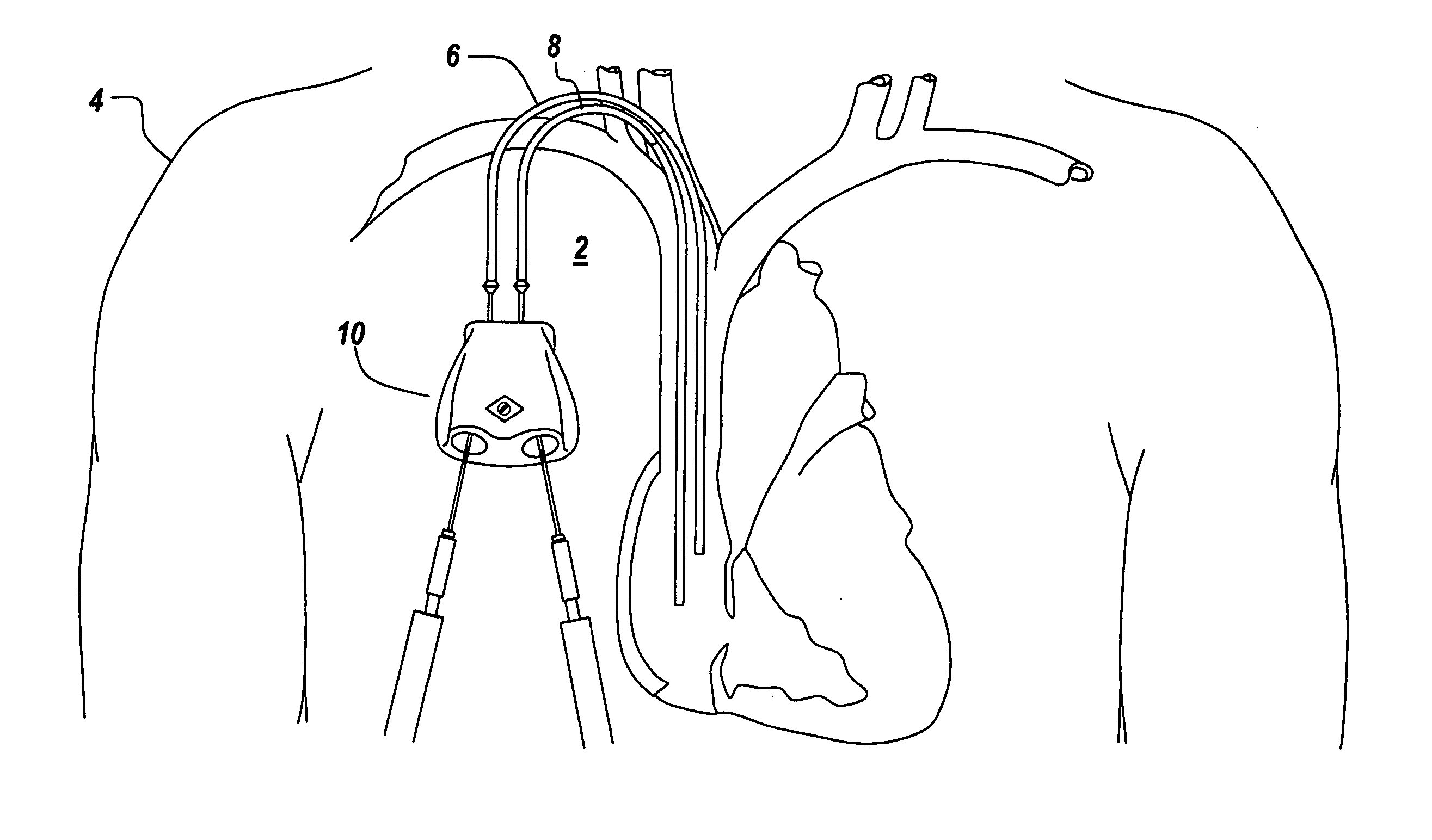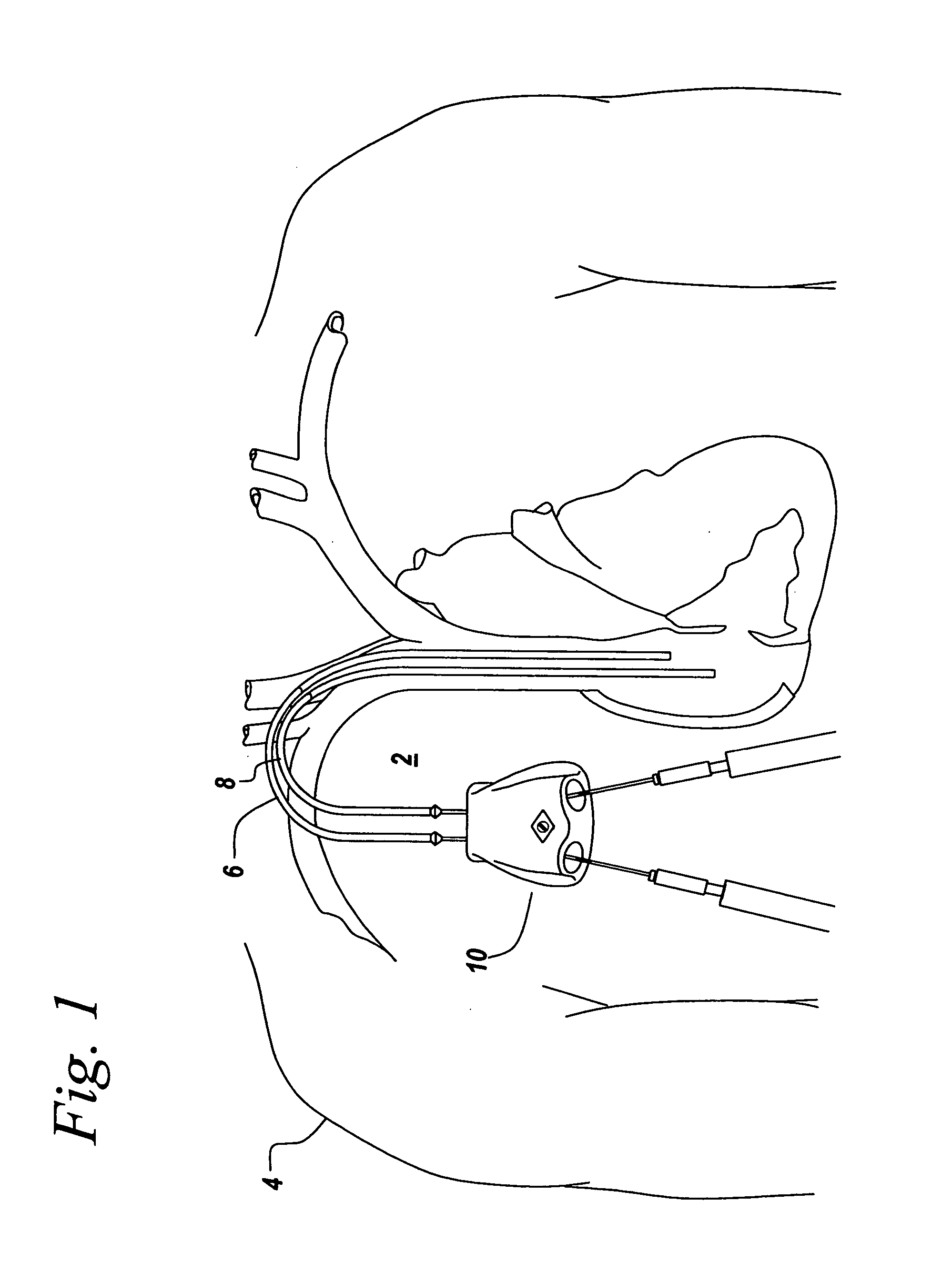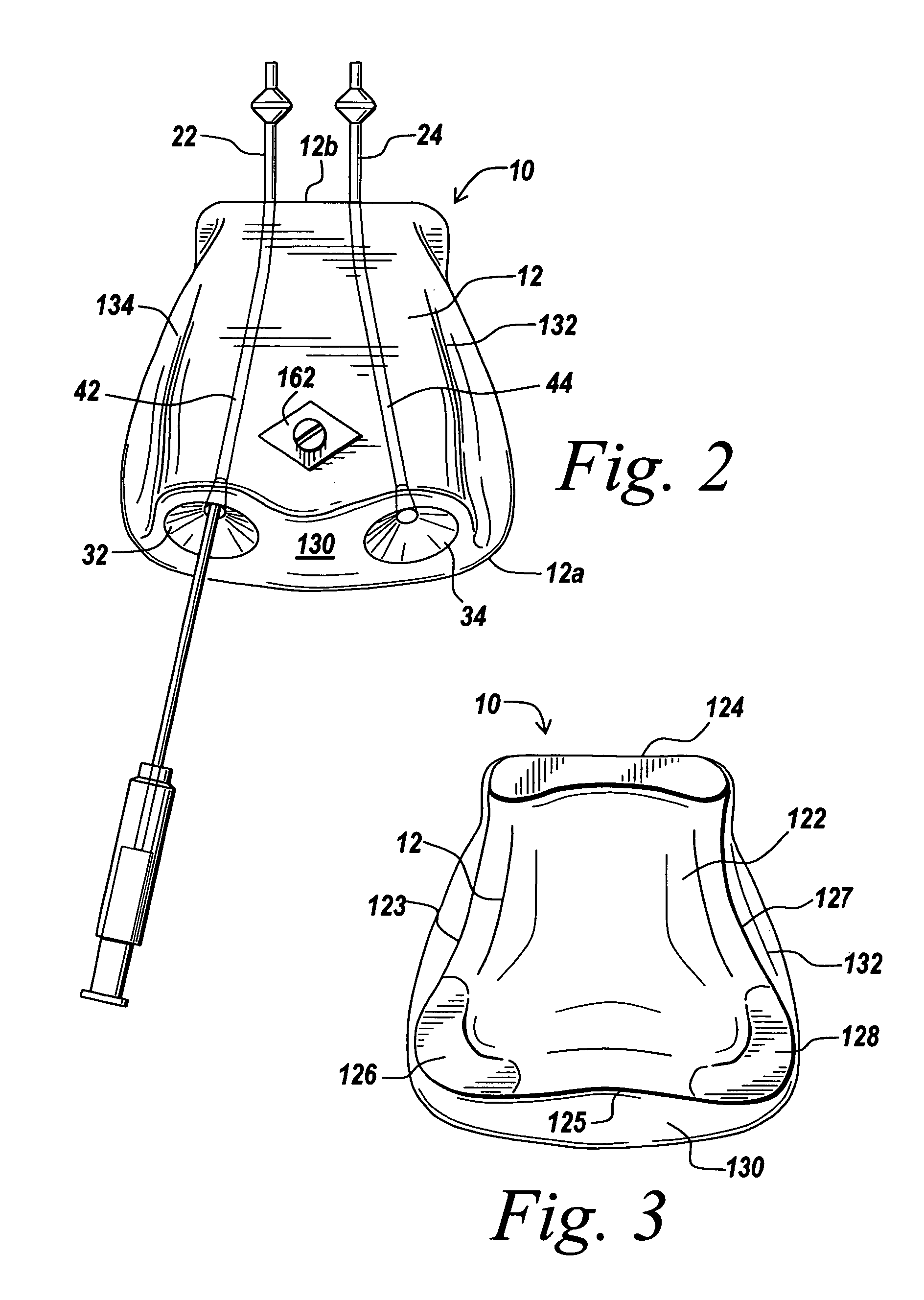Subcutaneous needle connection system
a subcutaneous needle and connection system technology, applied in the field of surgical implants, can solve the problems of significant health care hazards for both patients and healthcare workers associated with such traditional needle access methods, such as the death of esrd patients within days of total renal failure, and the inability to create a graft or fistula in some patients, so as to improve the fluid flow dynamics, improve the sealing effect, and improve the mechanical stability of the skin
- Summary
- Abstract
- Description
- Claims
- Application Information
AI Technical Summary
Benefits of technology
Problems solved by technology
Method used
Image
Examples
Embodiment Construction
[0026] An illustrative embodiment of the present invention provides a subcutaneous needle connection system for providing access to a vascular system of a patient that exhibits enhanced mechanical stability under the skin, improved fluid flow dynamics, improved needle hole healing potential of the skin, improved needle edge interfacing to minimize flow turbulence and blood cell trauma during use, and other features. The invention will be described below relative to certain illustrative embodiments. Those skilled in the art will appreciate that the present invention may be implemented in a number of different applications and embodiments and is not specifically limited in its application to the particular embodiments depicted herein.
[0027]FIGS. 1-7 illustrates an embodiment of a subcutaneous needle connection system 10 for providing access to a vascular system of a patient according to an illustrative embodiment of the invention. The illustrative subcutaneous needle connection syste...
PUM
 Login to View More
Login to View More Abstract
Description
Claims
Application Information
 Login to View More
Login to View More - R&D
- Intellectual Property
- Life Sciences
- Materials
- Tech Scout
- Unparalleled Data Quality
- Higher Quality Content
- 60% Fewer Hallucinations
Browse by: Latest US Patents, China's latest patents, Technical Efficacy Thesaurus, Application Domain, Technology Topic, Popular Technical Reports.
© 2025 PatSnap. All rights reserved.Legal|Privacy policy|Modern Slavery Act Transparency Statement|Sitemap|About US| Contact US: help@patsnap.com



